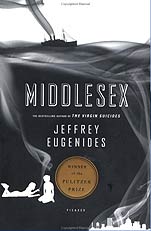
Jeffrey Eugenides’ Middlesex is an epic story, the family history of Calliope Stephanides, a young girl who discovers at age fourteen that she is actually a boy, a hermaphrodite. Tracing the recessive gene that gives Cal his ingrown gonads, the story starts with Cal’s Greek grandparents in Turkey, and courses through time to the present – their escape from the Turkish massacre in Smyrna in the early, their new life in Detroit, their son Milton and cousin’s daughter Tessie, and on to Calliope’s eventual discovery of himself.
From a purely historical perspective, Middlesex makes an interesting read. Eugenides colorfully paints the long gone or far away eras of Greek village life 80 years ago, the crossing of the Atlantic to Ellis Island, the struggles of young immigrants in a new land, working on the assembly line at the Ford factory, bootlegging operations over the Canadian border, the Detroit riots of the 60s, and the hippies of the early 70s.
Continue reading →
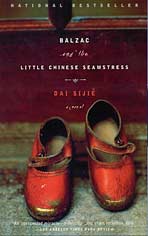
During China’s cultural revolution, two best friends, sons of prominent intellectual families, are shipped off to countryside to live and work as peasants. Their daily routine is hopeless, hard, dangerous, and dull until they secretly obtain a Chinese translation of a Balzac novel, filled with romance and adventure. They memorize the story and use it to impress and educate a pretty local village girl with whom they are both infatuated.
Dai Sijie’s novella, Balzac and the Little Chinese Seamstress, transports you to a remote village in China in the early 1970s where this little drama of love and hope is played out. You can almost touch it – the fields, the mountain cliffs, the opressing drugery, and the comical naiveté of villagers who become entranced with an alarm clock. It is lovingly written and translated from the original French. The author, Dai Sijie, was born in China, lived through the Cultural Revolution, and emigrated to France in 1984. At the conclusion of the book, the story all comes together; so if you wonder, “where is this going?” while you read it, as I did, don’t worry, it will all make sense. It’s not quite a novel, more like a long short story. A good read, I highly recommend it.
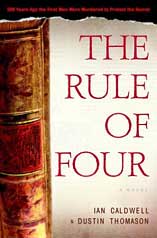
I was inspired to read The Rule of Four, the first novel of two recent college grads Ian Caldwell and Dustin Thomason, by a review from a bookseller’s website As Yet Unpublished. The Rule of Four is a fast-paced mystery that takes place on the campus of Princeton University. It revolves around an effort to decode a literary work from the Renaissance, the Hypnerotomachia, a real book around which there has been a lot of actual scholarly research. (See Introduction to Hypnerotomachia by MIT press.)
Like the other Renaissance code-breaking murder mystery, The DaVinci Code, to which it is often compared, The Rule of Four includes a couple of murders, a loyal team of sleuths, and plenty of historical references. The main differences are that The Rule of Four is actually much better written than The DaVinci Code, it is much more intellectually stimulating, and it doesn’t try to rewrite the history of the Catholic Church.
Continue reading →
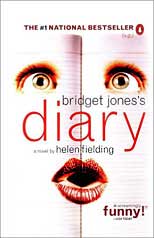
Helen Fielding’s Bridget Jones books are the best antidote I can think of for the grumpies, in my case most recently induced by an unexpected 5 hour layover at SFO. Fortunately most airports these days carry small but decent book stores and even more fortunately in this particular instance the SFO bookstore carried Bridget Jones.
Cervante-esque in their humour, Bridget Jones’s Diary and its sequel Bridget Jones: The Edge of Reason, carry us on a delightful romp through the life and loves of Bridget Jones, a thirty something London girl who can’t quite seem to get anything right, but for whom life magically all works out in the end. The first book is loosely themed around Jane Austin’s Pride and Prejudice, with the male love interest, who Bridget at first spurns, is a one Mark Darcy, a deliciously modern day character equivalent of the first Darcy.
When the Bridget Jones Diary first came out I was bemused to read some reviews, by men naturally, who were appalled by Bridget’s shallow self-obsessions with weight, cigarrettes, drinking, and “shagging”. Well my friends, believe it or not, Bridget’s diary does indeed express the way that most of us single women think and feel. Which is exactly why it is so hilarious. Bridget is exposing our innermost insecurities and obsessions for the whole world to read.
Continue reading →
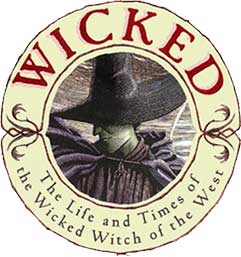
How did the Wicked Witch of the West, from Frank Baum’s Oz stories, get to be so wicked? Gregory Maguire tells her story, in Wicked: The Life and Times of the Wicked Witch of the West . Author of Confessions of an Ugly Stepsister, Maguire seems to revel in turning our beloved fairy tales upside down, and having us rethink our cherished notions of absolute good and evil. The Wicked Witch wasn’t born a witch, nor wicked. In Maguire’s delightful telling, we learn of Glinda’s obsession with status and fashion, the Wizard’s inhumanity, and the friendships, loves, and lost loves of little green Elphalba, the story’s moral center, who is ultimately destroyed by innocent Dorothy. This tale is more real, and more like life as we know and experience it, than the original. There’s always a different side to a story, and in the case of Oz, this is it. A great read from start to finish. I could not put it down.
. Author of Confessions of an Ugly Stepsister, Maguire seems to revel in turning our beloved fairy tales upside down, and having us rethink our cherished notions of absolute good and evil. The Wicked Witch wasn’t born a witch, nor wicked. In Maguire’s delightful telling, we learn of Glinda’s obsession with status and fashion, the Wizard’s inhumanity, and the friendships, loves, and lost loves of little green Elphalba, the story’s moral center, who is ultimately destroyed by innocent Dorothy. This tale is more real, and more like life as we know and experience it, than the original. There’s always a different side to a story, and in the case of Oz, this is it. A great read from start to finish. I could not put it down.
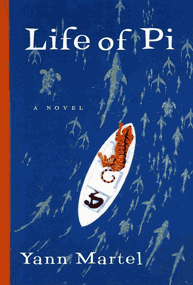
Yann Martel spins a magical story with Life of Pi. In this book, he recounts the boyhood of Piscine Patel whose parents were zoo keepers in India. Pi is fascinated both with God (simultaneously practicing Islam, Christianity, and Hinduism) and zoo animals. When the ship he is taking with his family and some of the animals sinks in the Pacific, Pi finds himself castaway on a 26 ft life boat with an injured zebra, an orangutan, a hyena, and a 450 lb bengal tiger named Richard Parker. Soon only the tiger and Pi are left on the boat and Pi is left to use his wits to survive the elements and keep from being eaten by the tiger. Pi realizes that he can’t kill the tiger and must learn to become his master in order to survive the ordeal. The interactions with the animals and Pi’s journey are all metaphors for living a spiritual life. The underlying current of the book is that Pi must master his own dark-side, his fear and despair with vigilance and compassion. Much like the Buddhist saint Milarepa who finally mastered the demons who were torturing him by accepting them and befriending them, Pi masters himself and the tiger Richard Parker. There’s much more too it, but telling more would give away the story. Simply, the book left me with sense of wonder and sadness from how one man survived the tragedy of losing his family and the 7 month ordeal of being lost at sea.





